
|
 |

|
 |
Geeta Chandran celebrates 50th anniversary of her arangetram - Shveta Arora e-mail: arorashveta1806@gmail.com November 9, 2024 Soloist, choreographer, teacher, scholar, a shaper of arts policy and a leading light in Bharatanatyam, dancer Geeta Chandran performed a one-hour varnam, old-school, at the golden jubilee of her arangetram in Delhi on 25 October. 'A varnam is actually a one-hour piece, it's not something that is finished off in 20 minutes, like it is today. It is like a vilambit khayal - it needs that kind of delineation. Each line needs to be slowly delineated. I'm planning to do a varnam in the old style,' she said of her recital on marking exactly 50 years to her arangetram on 25 October 1974. Geeta Ramakrishnan was only 12 when, on that day 50 years ago, she took the stage under the watchful eye of her first guru, Swarna Saraswati. On 24 October, her students performed 'Pravahati' showcasing the work and the philosophy she has imparted to them over the decades. The two-day programme took place at Kamani auditorium, Delhi. It was learning with no stakes. Geeta Chandran describes the teaching methodology, the attitude towards the arts and even the approach to a piece's choreography when she was a student, all radically different from today's structured, limited, time-bound learning. The learning was never geared towards performance. None of my teachers came from a space where they only talked about performance. They talked about acquiring knowledge and going deeper into the learning process, because there were no workshops like there are today, no way to teach items. It was all long years with the teacher, imbibing an ethic for the work and a philosophy towards the arts. The learning was very different from what it is now, when it is all about what to do in the next programme and the next item. It was (then) always about increasing the base of knowledge. With any piece, it was never seen as ready for performance - it was always seen as a work in progress, you added layers as you went along. No teacher said that if an item has been choreographed one way, it had to be kept that way. They would always say, bring your experience into it. They came from the manodharma space, create and recreate all the time. That space I think was very, very valuable for me because coming from a background of poetry and music, the importance of never freezing a piece, keeping it open to ideas and bringing new insights into it is very important. Every time you did a "Krishna Nee Begane Baro", it would be infused with the last darshan you had of Thakur ji and what you took back and how you brought it into the performance. It was never like one had to do the same thing that was taught first. Ten dancers would all do the same piece differently - if not different choreography, then a different personal take on the piece. Everybody has a different body and mind, thinks differently, evolves differently, speaks the language of dance differently. That has been the important journey (in these 50 years) - of finding the individual, the voice of the person, whether the teacher's or my own. I have learnt from many teachers but ultimately, it is your own voice you must find in the arts. And my teachers gave me the space for it, and I do the same for my students. The important thing is not to look like me but to imbibe the philosophy towards the arts. It is not cloning. Imparting that philosophy is hard, it cannot be done overnight, it cannot be done in a workshop situation; it needs to be lived, it is a process of osmosis. It takes time. That's why art cannot be very thinly spread. You can't have 20 workshops and say they are all my students. A student becomes your student when they have been with you over many years. Otherwise, they are just shopping with you. 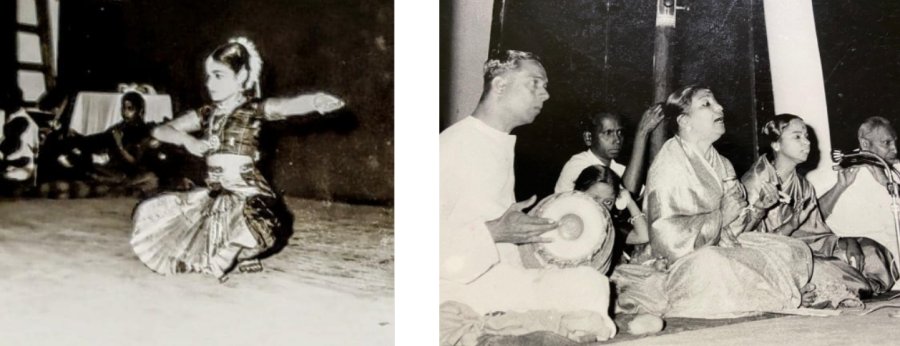 Arangetram That time, it was learning with no stakes really and never thought I would be a dancer. I just loved dancing and I thought my teacher saw some spark because of which she agreed to do an arangetram, otherwise she didn't allow anyone to do arangetrams unless she saw something in the student. It was three days a week, and there was a fixed time to go but there was no fixed time to come back from dance class. It could be three hours, four hours... we would just be there, either reading a book or seeing the seniors dance or talking to a musician hanging around there. It was a different kind of learning, not like today. Today, everybody is very conscious of how much time they are giving you and it is made out to be a favour that they are coming to you. It was not like that. Even the musicians gained from sitting with Guru ji. There was great learning happening for them also - we were a part of that whole process of overhearing their conversations, how the seniors would approach the piece, why they were doing it. It was not just about one's own class. It was about sitting and watching and imbibing a process. We would remember even the music for the seniors' pieces from simply listening to it so often, because we would watch them. There were many different layers of learning. She would also make us teach the youngsters who came after us - we learnt how an adavu could be taught differently and how it looks on a different body than oneself. That was also a learning process. It was not structured. It was just a process of being there and doing things as they came along. Now we realize that what we learnt is invaluable. Amma used to sing in every class, no recorded music was ever played in our teaching set-up. Looking back, these were great assets. There wasn't much technology. She never even allowed us to record the music of a performance. We would have to learn and memorize it for practice. That was the process - shruti smriti. She would say go home and write, there is no writing in class. Keep your mind alert. Now, music is given to the students, there are video recordings, photocopies of the lyrics, the music, so much spoon feeding. Is the dance that much better correspondingly? I don't think so. I think giving so much engenders complacency in the class. Not like us, who would sit in class like sponges, alert for any scraps we could gather. It was a different era, and very thorough - I remember by heart all of what we learnt. Reinforcement has paid off. They always say what you learn at that age (roughly 8-12) you never forget. Amma taught us so much during that time - three jatiswarams, eight varnams, four to five thillanas, we would work ourselves to the bone over these in every class. It was a great treasure that's stayed in the mind. Even gurukuls today are structured. Things have changed with time. That time was less rushed, there wasn't this much financial pressure in the arts... it was a different era. We can't compare it with today - we should not.  A young Geeta When I did my dance dialogue work for the first time, people wrote me off as a traditional Bharatanatyam dancer. Geeta Chandran describes her evolution as a soloist, from the margam to thematic productions like her latest, 'Our Voices': It is very clear that I have two streams that I've been doing parallel - the traditional margam and within that, the theme-based programmes I have done. The other things have been pushing the frontiers and doing things like "Gandhi", "Kaikeyi", "Her Voice", "Aval" - many things that are not necessarily out of the margam but are thematic works that require a different kind of sensibility in terms of the visuality of the dance, the soundtrack... we've done Bharatanatyam to Tchaikovsky, to different kinds of music. If you take a thematic presentation, you also need to think about how best you can communicate that to the people. I have never feared moving out of the presentation technique. I have collaborated with visual artists, puppeteers, musicians of different genres. But when I do my margam, I don't compromise at all, I keep it completely traditional in movement, music, the philosophy given to me by my teachers. But when I do experimental, collaborative, or dance-theatre, dance-movement work, that is a different space and there, I don't limit myself. I work with parameters that are very different. Then, I am guided by aesthetics, storyline, and I am communicating a particular sentiment or aspect that guides me. These two are very different and I have kept them going parallel. And when I did my contemporary or dance dialogue work for the first time, people wrote me off as a traditional Bharatanatyam dancer. At that time, nobody stepped out. Anybody who did a margam never thought that they could also do other things. Many of the gurus in Chennai were saying God knows what she is doing. Of course, 20 years later, those very gurus were doing exactly that. But one was ahead of the curve in that sense. In the 90s, when one did it, it was not seen as something that a classical dancer who does a varnam should be doing. I've always followed my heart, and I have always had very good people who have trusted my art and commissioned work on me. Like "Her Voice" was commissioned in 1998-99 by WISCOMP when they started their work and they trusted that we would come up with something meaningful. The dance collaboration worked very well at that time. One has also paid a price for stepping out of the so-called boundaries of tradition. Though it is not I who feels I have stepped out, but others. So I just feel sad for such people, because once you draw very strict boundaries for yourself, I don't think you can be a very creative dancer. 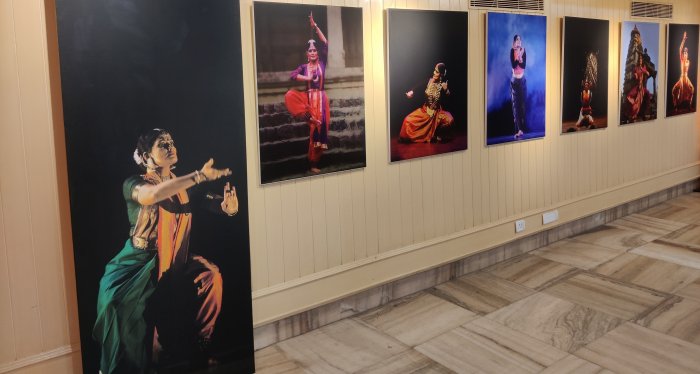 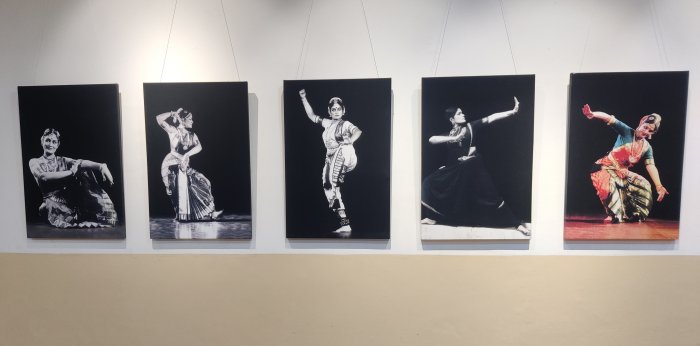 Photo exhibition (Photos: Anoop Arora) Being a performer and a teacher are both full-time jobs. Geeta Chandran describes how being a disciple has shaped her as a teacher and what her vision was for Natya Vriksha, her dance school. Natya Vriksha was never meant to be just a dance school. It was meant to impart Indian traditions, whether it is textiles, shapes and forms, sculpture, architecture, doing seva in Vrindavan, staying in an ashram and doing all the seva there - everything was part of the ethos. And I don't take students from other teachers. I find that extremely unethical to do. I think that all the students in Natya Vriksha are with me right from the beginning. The bond develops over the years... I have seen them go through school, through college, through their teenage problems, a whole lot of issues - growing up in a city like Delhi is not easy. It's extremely stressful. As a teacher, I stand by them through all this, like another parent. At Natya Vriksha, we ensure that it is a safe place where they can come and dialogue, cry, weep... I just have to see their face and ask what happened, and the tears just roll out, then I give them a hug and they are okay. It's a process of being involved with their entire life. It's not auditioning them for a particular production, doing that work and saying bye bye. This is a different ethos, where you engage and become a parent/guardian/friend, whatever they want you to be. This is a very time-consuming and emotionally draining process I have taken on. It pains me when people trivialize this relationship of the teacher and the taught. It is such a sacred bond and the affection I have got from my students is immeasurable. School is a different ballgame altogether; parents don't have time, where do the children go? Dance learning becomes a way of de-stressing, a catharsis. The dance space can exorcise all the toxins within you and help you become a better person. Each class becomes a time to, in a sense, detox and go back enriched and happy, to feel that spirituality, that bond with the dance, and experience the body by working out, exhausting it. When they come, they are so listless and by the time they go, they have a hop and a skip in their walk and they are red in their cheeks. It is a process and it needs a lot of time. It's very hard to be a full-time performer and a teacher. I believe both are full-time jobs. And when people combine them, it takes a toll. It takes a huge toll emotionally, as it has on me also. I also feel that the commitment and loyalty I had from my earlier students, I can't expect from the current generation. There is definitely a change in the value system. It's very transactional. We have reached a point where everything is transactional - I pay the money, the school must deliver. I pay the dance class, the class must deliver. That is the attitude now. It was not so when I started teaching. But that is all the more reason why I have to then make them understand that life is not all transactional. So there is a lot of talking that goes on in class and trying to make people see that there is another way of living which can be beautiful, giving and sharing. Those values are constantly reinforced in class. Every dance teacher has to see herself or himself as a life coach first. Imparting life skills is the first thing you do, dance can only come after. I realized my passion and Rajiv's family supported that. Being a full-time dancer and teacher while also doing justice to the roles of wife, mother, daughter and daughter-in-law is difficult. Geeta Chandran describes how she navigated her husband's very different family environment after marriage and found space in it for herself and her dance. It's been tough because I came from a nuclear family into a joint family. That was not easy - it was just my mother, father and me all the time. That bond was very strong. My mother was a very big influence in my life; she never got over my marriage, actually. She was always so disturbed by the fact that I really have gone into another family. She was very possessive of me. 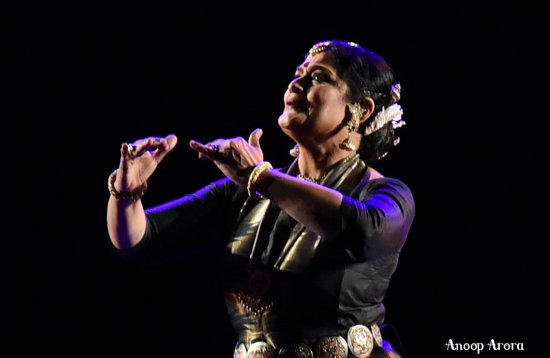 Geeta Chandran (Photo: Anoop Arora) I was going into a large family with mother-in-law, her mother and a huge round of cousins and other extended family. One small event meant about 80 people coming to the house. It was also a challenge for me and I had to really struggle initially in those years. But I think if your spouse is a mediator, helps you negotiate, and tutors you in how to negotiate with different people and what they stand for, then it makes it a little easier. I had my daughter pretty early as well. I became a mother when I was 25. Responsibilities were there - there were my in-laws, my parents... my mother-in-law's mother was with us for a long time and we needed to be there when things were needed, plus my daughter - one had to juggle these things around. But finally, it is the trust and faith you inculcate in the family. I was always there for people and I think they respected what I did. I realized my passion and everybody supported that. Of course, I also made those adjustments so that I was able to be there for people when they needed me and was always there for my daughter. I dropped her off at the bus stop, picked her up, I believed in doing all that, I would have all my rehearsals when she was in school and then later in the evening so that somebody was there for her all the time. That multitasking one has to do - like making sure that when I travelled, my mother or mother-in-law was there, Rajiv was around for her. All that needs planning and you need to be constantly aware of what you're doing and work around that.' 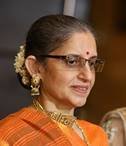 Shveta Arora is a dance-mad writer who chronicles classical dance events in Delhi (and also those online). In 2009, she started the blog Kala Upasana at delhiculturecomment.blogspot.com, where she began posting her own writing along with photographs clicked by Anoop Arora, her husband. She's been dancing all her life as a devotee, but resumed her formal training in Kathak in her 50s and has passed her fifth year Kathak exams. Post your comments Please provide your name and email id when you use the Anonymous / blog profiles to post a comment. All appropriate comments posted with name and email id in the blog will be featured in the site. |